I may earn a small commission from purchases made through product links on this website at no extra cost to you. As an Amazon Associate I earn from qualifying purchases.
Last updated: November 30, 2023
Learn how to play croquet for beginners with our guide to the rules and field setup of this entertaining lawn game.
Croquet is an entertaining lawn and backyard game that can be played by two to six players, either individually or as teams.
But how exactly is this game played? Grab a mallet and learn how to play croquet for beginners. This article delves deeper and details the rules and setup of the nine-wicket variant.
Quick navigation:
Croquet Rules Quick Guide
Would you like to have the below 9-wicket croquet rules and guidelines in an easy-to-print two-page PDF document?
My quick guide explains the rules of the 9-wicket version of croquet in easy-to-understand language without any advertisements, photos, or other distractions.
For only $2.50, this quick guide is yours so you can print it out and take it with you to your next croquet game!
What Is Croquet?
Croquet is a lawn game where players hit balls through hoops, otherwise known as wickets. A wooden mallet is used to shoot these balls. You can play this game on any flat surface, be it in your backyard or on a professional court.
The game’s primary objective is maneuvering your balls across the lawn and through the nine strategically placed wickets. The balls need to go through the wickets in the correct sequence and direction.
Origins of Croquet
It remains unclear how the game croquet was invented. Some sources claim it originated from the French game “pall mall”, while other theories assert that pall mall was more golf than croquet.
History pinpoints the first documentation of the present game to the mid-19th century. During this time, the Irish game “crooky” was launched in England. John Jaques, a London-based sporting goods manufacturer, started manufacturing croquet sets for widespread use and recreation.

Upper-class individuals mostly played initial croquet games, but by 1870, its popularity had spread throughout England and its colonies. The surge in popularity saw croquet introduced in countries like the United States, Canada, Australia, New Zealand, and South Africa.
However, the emergence of lawn tennis slowed down croquet’s momentum around the start of the 20th century, and it wasn’t until decades later that the game of croquet was revived.
By 1950, Americans had learned how to play croquet. It was played across the US mainly as a recreational sport. From then to the present, the game has been on an upward trajectory. In Canada and the US, the recreational 9-wicket croquet is prominent, while garden croquet is more popular in the UK.
Today, many variations and croquet spin-offs exist, such as Golf, Extreme, Six-wicket, Garden, Nine-wicket, and Ricochet, to name a few.
Why Do I Like This Game?
Croquet is quite a sophisticated game that requires good coordination skills and a sense of strategy.
It’s not a wild and action-packed backyard game; instead, it’s a game that allows for a bit of thinking, strategizing, considering, aiming, and much more. And all of this happens in a relaxing environment shared with family and friends.
- COMPLETE CROQUET SET: Includes 6 color mallets, 6 balls, 9 wickets, 2 end posts...
- KIDS AND ADULTS: Full size 35 inch handles can be used by players of all sizes,...
- PREMIUM CONSTRUCTION: Mallets are crafted from premium hardwoods for durability...
Croquet Rules for Dummies
Different croquet versions have unique rules. The United States Croquet Association (USCA) has a rule book that governs 9-wicket and other versions.
Nine-wicket croquet is the ideal recreational game for friends and families, and that is what I am discussing in this article. It’s the simplest form of croquet, best suited for backyard play.
To explain how to play croquet, I am going to discuss the following:
- Equipment
- Field setup
- Game objective
- Game rules
Let’s dive in!
1. Equipment
The game is played by 2-6 players individually, by two teams of 2 players, by three teams of 2 players, or by two teams of 3 players.
The first step in learning how to play croquet for beginners is knowing what equipment you need.
Croquet equipment:
- Mallets x6
- Stakes x2
- Balls x6
- Wickets x9
The mallets and balls typically come in six different colors; one color per player.
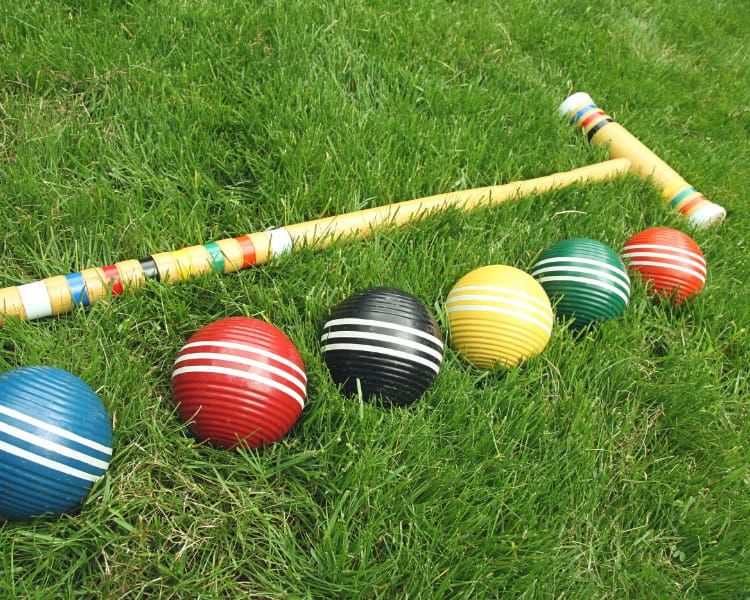
Mallets
A croquet mallet is a wooden rod with a hammer end that’s used to strike the ball. The mallet’s length can be between 26 to 35 inches, weighing anywhere between two to three pounds. The hammerhead measures around 12 inches and can be square or round.
Note that sometimes the heads are referred to as the mallets. However, we are referring to mallets as both the handle and the head.
Stakes
Croquet stakes are typically made from wood and have colored markings that match the colors of the mallets and balls.
Stakes are installed at all ends of the croquet court, approximately 6 feet from the boundary.
Balls
A backyard croquet set comes with six balls. The balls have a diameter ranging from 3 to 3.6 inches and can weigh up to 16 ounces.
As mentioned, the mallets and balls have matching colors, so each player plays with one mallet and one ball of the same color.
Wickets
Players play 9-wicket croquet using nine iron hoops (wickets).
The wickets are fixed to the ground and are roughly 4 inches wide and 12 inches high.
2. Field Setup
You have to know how to set up the playing court when mastering how to play croquet for beginners.
You can play this game anywhere, provided the surface is flat and the grass is short. The court’s surface must also be soft enough to install the wickets.
You will need nine wickets and two stakes. Optional items such as chalks, flags, and strings are also helpful.
A standard nine-wicket court measures 100 feet in length and 50 feet in width. Of course, the lawn doesn’t have to be that long, but whatever measurements you choose, ensure that all sides are scaled down in proportion. The settings below are for a 100 x 50 feet lawn.
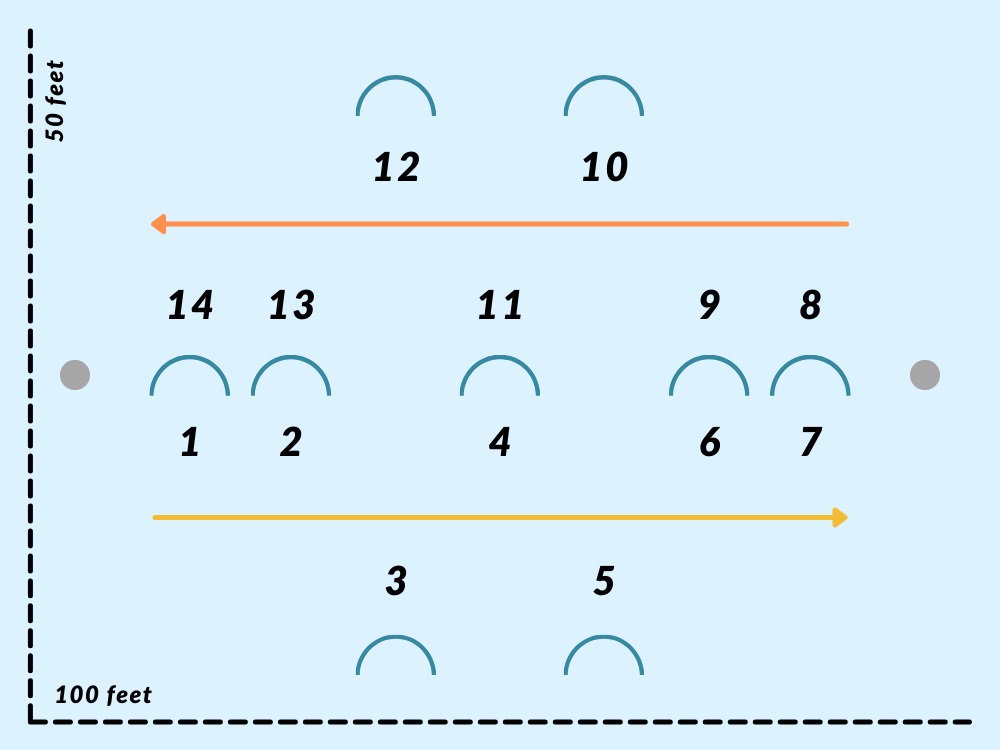
Once you mark the boundaries of the playing court, the next step is setting up the stakes, followed by the wickets:
- Install the stakes along the centerline. Each stake should be 6 feet from either end of the court.
- Measure a distance of 6 feet from the stake and install the first wicket.
- Install the second wicket 6 feet away from the first and in line with the stake.
- The next step is installing two wickets on either side of the court. They have to be 16 feet away from the second wicket.
- The fifth wicket is placed in the center of the court, 32 feet away from the second.
These are the settings for one half of the lawn; follow the same process when fixing the remaining wickets on the other half.
3. Game Objective
The objective of nine-wicket croquet is to be the first player to score 14 wickets and 2 stakes in the correct order.
Before playing, you will need to determine the number of players and which player to go first. Each player will get one mallet plus a ball of the same color.
The order of play is determined by the colored markings on the stake. The player with the color that is highest on the stake goes first.
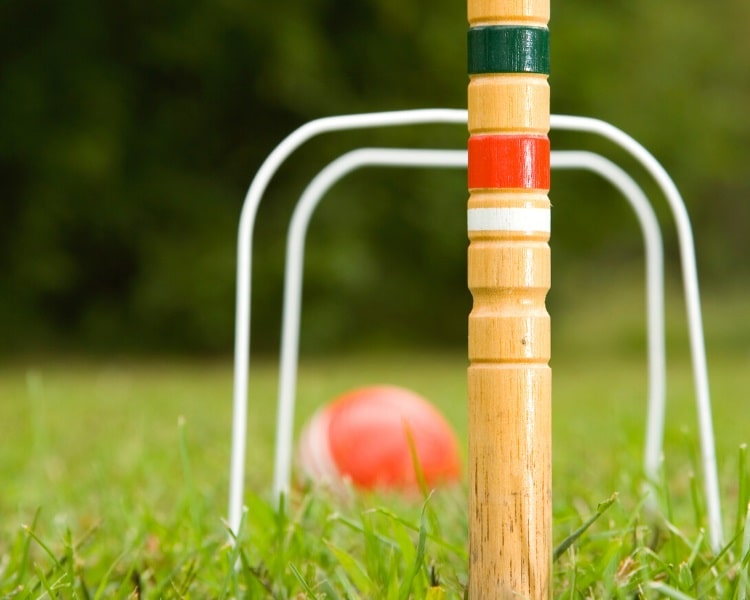
The game starts by placing the ball between the starting stake and the first wicket. From there, the first player must try and shoot the ball through the first wicket, followed by the second wicket, and so on.
Once a player hits the stake at the other end of the field (after completing the first 7 wickets), they turn to complete the remaining 7 wickets, after which they need to hit the starting stake to end the game.
4. Game Rules
Now that we’ve discussed the field setup and objective of the game, let’s dive a little deeper into the rules of croquet.
Turns and Bonus Shots
Each player gets one shot per turn. However, bonus shots can be earned when one of the following happens:
- Scoring a wicket (1 bonus shot)
- Hitting the stake (1 bonus shot)
- Hitting an opponent’s ball (= roquet) (2 bonus shots)
- Scoring a double wicket through 1+2 or 6+7 or 8+9 or 13+14 or 7+stake (2 bonus shots)
A wicket only counts if the ball has gone entirely through the wicket and in the right direction.
When hitting an opponent’s ball (roquet), the first of two bonus shots can be done in 1 of 4 ways:
- Mallet-head shot:
When your ball is in contact with the opponent’s ball, place your ball a mallet-head distance or less away from the opponent’s ball, and shoot. - Foot shot:
When your ball is in contact with the opponent’s ball, shoot with your foot placed on your ball to tactically remove the opponent’s ball. - Croquet shot:
When your ball is in contact with the opponent’s ball, shoot your ball without using your foot. - Normal shot:
When your ball is not in contact with the opponent’s ball, shoot as normal.
The second bonus shot is called a continuation shot, and is a normal shot.
When hitting an opponent’s ball and then scoring a wicket in the same shot, the wicket doesn’t count, but the two bonus shots are awarded.
When scoring a wicket and then hitting an opponent’s ball in the same shot, one bonus shot is awarded. In your next shot, you can try to hit your opponent’s ball again to earn two bonus shots.
The maximum number of bonus shots a player can earn in one shot is two. When scoring a wicket, any remaining bonus shots are forfeited. In theory, a player can complete and win a game in just one turn.
Play Direction
Players earn a wicket only if they strike the ball through the wicket in the correct direction.
Hitting the ball through the wicket in the wrong direction is allowed but won’t earn you anything.
Ball out of Play
If you’re playing with boundaries around the court, and a ball goes out of play, there are rules to consider.
To bring the ball back into play, place the ball one mallet’s length (or 1 meter) from the boundaries into the field where the ball exited the field.
Printable Croquet Rules Quick Guide
Would you like to have the above rules and guidelines in an easy-to-print two-page PDF document?
My quick guide explains the rules of the 9-wicket version of croquet in easy-to-understand language without any advertisements and other distractions.
For only $2.50, this quick guide is yours so you can print it out and take it with you to your next croquet game. By purchasing this handy guide, you will be supporting my website so I can keep creating more of this type of content.
Final Thoughts
You’d be forgiven for assuming that croquet has complicated rules, but hopefully, after reading this article and playing a few times, you will find it’s pretty easy to pick up.
Croquet certainly isn’t for everyone, and I also find that the vibe is very different from, for example, playing a game of washer toss.
But ultimately, croquet is a fun game that promotes bonding between friends and family in the yard. It has certainly become one of my backyard favorites in recent years.
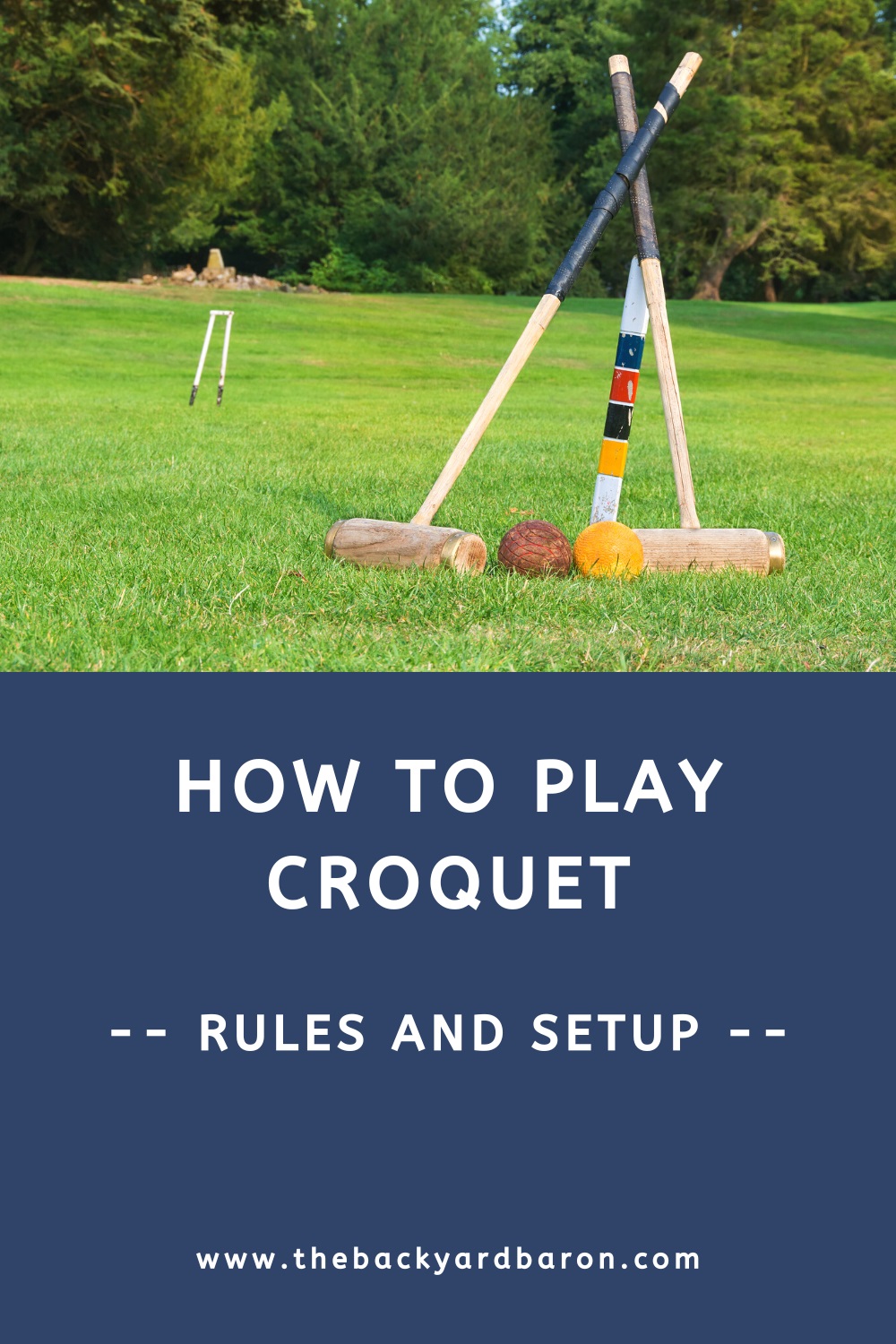
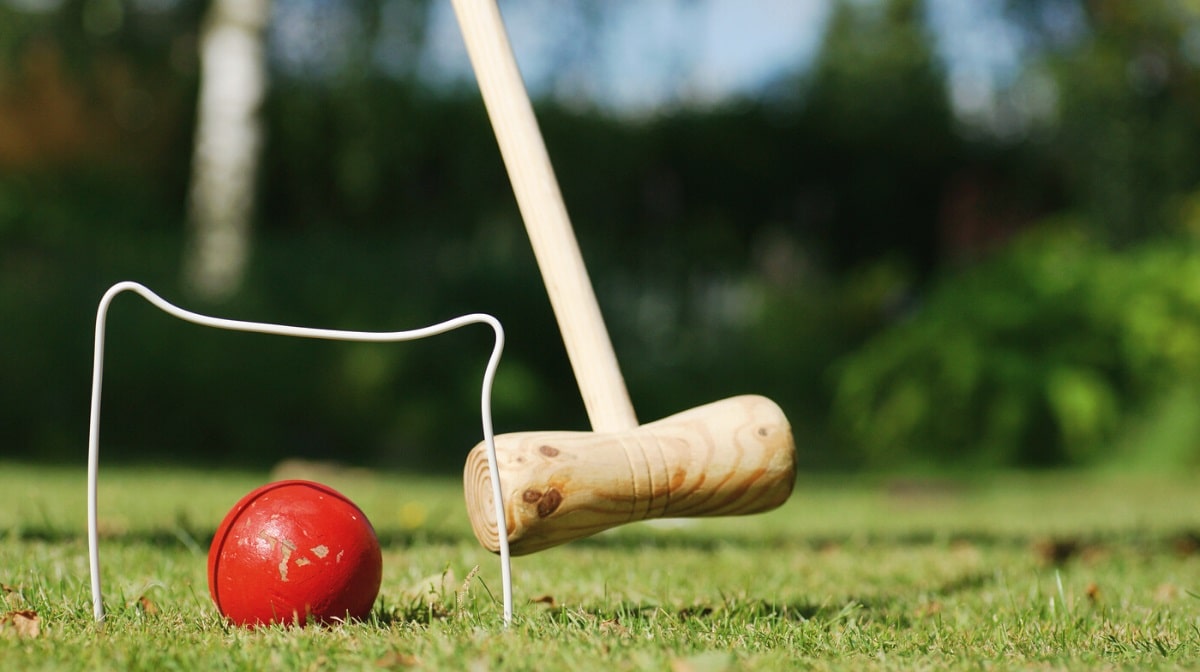
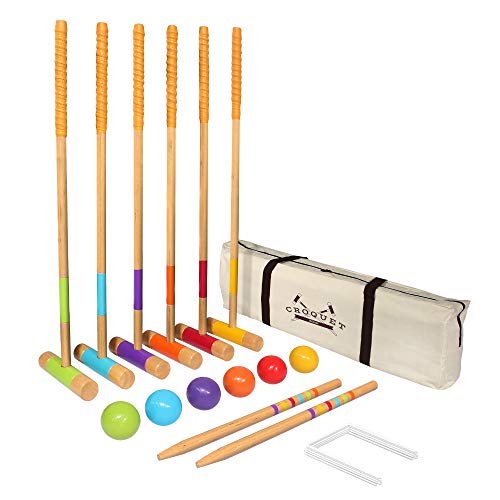
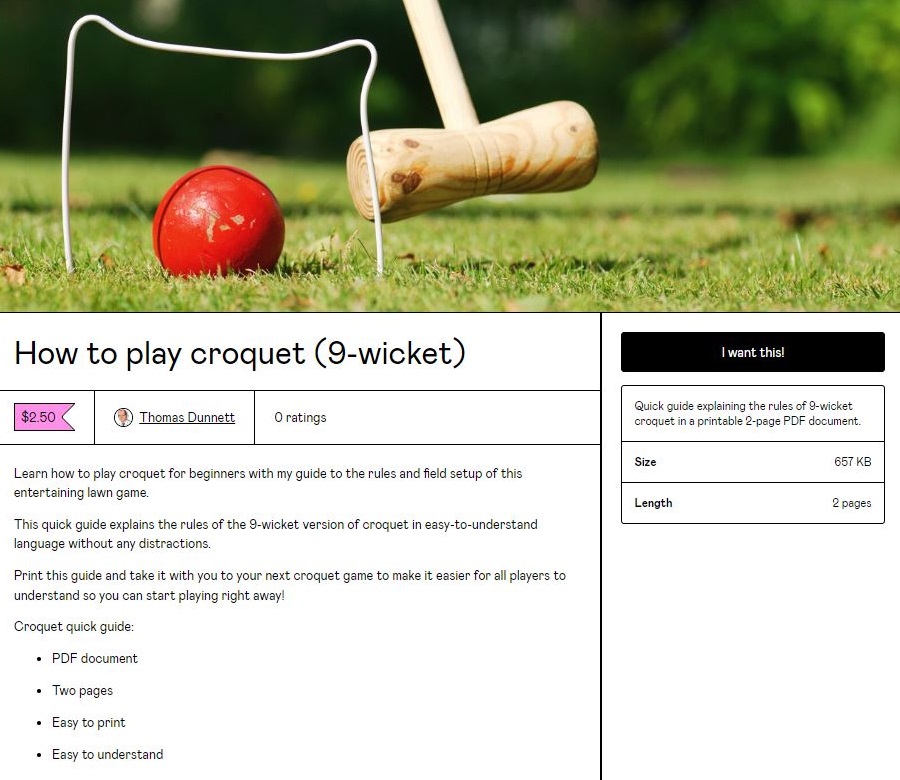
This is a great introduction to the game of croquet! It’s helpful to have an overview of the rules, setup, and basic strategies before diving into playing with friends or joining a club.
Hello Thomas,
I have a somewhat odd question. When playing a recent game, one player was playing well and had advanced way ahead, so another player, rather than continue on his “path” of wickets decided to hit his ball way ahead, out of order, to hit this other person’s ball. He did this so he could shoot the player’s ball way to the other end of the field. This allowed another player to get ahead and ultimately win the game. Is there a rule that states players must stay on “their path” rather than go “off their track” to attempt to hit another ball out of play?
Thanks, Ed
Hi Edward, that’s a good question.
My understanding is that this is allowed even though it may not look very sportsmanlike. You could introduce boundaries around the field so that balls can never go too far away.
Thanks Thomas, and I agree your unsportsmanlike comment.
We’ve been holding an annual Croquet Tournament for 35 years and never had this happen. We are thinking about making a rule that you must stay on “your” path and not navigate off such, and the re-enforcement of field boundaries would also help!
Thanks for your clarification,
Ed
Why is it so hard to find rules for this form of croquet (6 players, 2 stakes, 9 wickets)?
There are all sorts of other croquet games, which is great, but this form of the game is the only one I’ve encountered here in the US in my six decades on the planet. And yet, it seems to be the hardest form of the game to locate the written rules.
Thanks for offering a clear version we can work with, even if peer pressure sometimes forces to alter our house rules to meet others’ expectations/variations. 🙂
Thanks Dan, glad you liked my version of the rules!
And you’re right, it’s hard to find exact, well-written rules for the 9-wicket form of croquet.
My husband and I are planning to give a croquet set (a beautifully made set that my husband has had since he was 10 or 11, so about 65 or 66 years old) to a local Boys and Girls club.
I need to give them directions for play, and your directions for play are the simplest, easiest to understand. However, I find I can’t print them. I don’t do Facebook, Twitter, or Pinterest, and the site won’t let me cut and paste (produces nonsense words and symbols).
I need to give the Club some simple directions such as yours. Can you help? Give me a procedure?
Thank you.
Hi Anne,
Very glad to hear you’ve found the directions helpful! I’ve created a printable quick guide to make it easier for people to print and take with them.
This handy 2-page PDF document is available for only $2.50, and you will be directly supporting this website if you purchase a copy.
See the link further above in the article.
If a player hits your ball through the wicket, do you have to go back to do it yourself or are you through and can keep moving on?
Hi Courtney,
It is my understanding that if another player hits your ball through the correct wicket, it counts, and you can keep going.
Thank you. We just acquired a croquet set but there were no rules. This was very helpful.
Brilliant! Thanks so much, and enjoy the wonderful game of croquet, you’re going to love it.
Brilliant, thank you so much.
Glad to hear you found this guide helpful Jane, hope you’re enjoying the game of croquet.